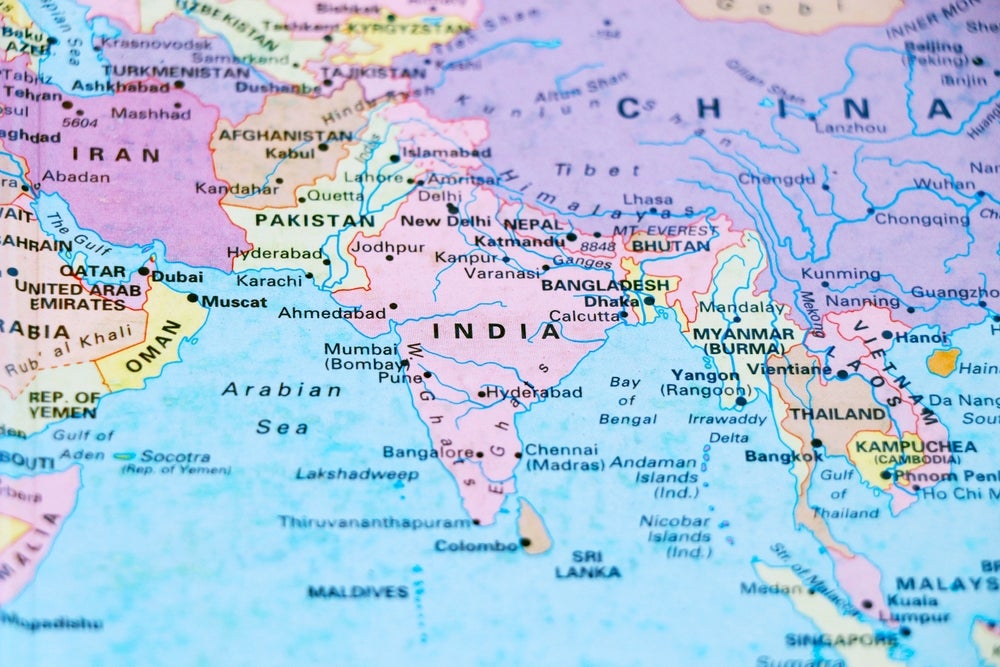Asia-Pacific regional consumer finance business is bound to raise
eyebrows. The bank has been active in several Asian markets but has
not had a clearly defined strategy. Puneet Bahl, the bank’s head of
consumer finance, consumer clients, Asia, talks to Titien
Ahmad.
Puneet Bahl joined ABN AMRO in 2006 from Standard Chartered,
where he was the regional head of secured and unsecured lending.
Prior to that, he was with Citibank in a variety of globe-trotting
roles, managing its regional cards businesses.
It is obvious to Bahl where the bank stands and what he needs to
do at ABN AMRO. He told CI: “We have come to the market at
least 15 to 20 years after the industry started. We cannot play the
game of the big boys. We cannot take them on head-to-head – it’s
too late for that. We have to be smarter and more selective about
where we operate. Like many other foreign banks we are also
constrained by limited distribution so we cannot be a mass player.
Segmenting the market becomes critical for us.”
The market segmentation translates to specifically targeted
products. “We have to think of clear niches,” said Bahl. “We have
products that are available for all and sundry, but growth and
focus will come from niche products. For example, in Singapore we
offer a standard platinum card but in addition, we’ve just launched
the NRI [non-resident Indian) card, targeted at Indians working
abroad. Everyone is doing NRI banking but strangely enough nobody
has launched an NRI card.
“A couple of weeks ago we launched another card in Singapore
called Switch, which is a lower-priced card. It has no annual fees,
low interest rates and no cash advance fees. It’s the best value
you can get in Singapore. This is targeted at people who want a
credit card that gives them real financial benefits. The general
interest rate in Singapore is 24 percent but the Switch card
charges 18 percent, offering real value to customers in addition to
the usual lifestyle benefits offered by most credit cards.”
Recent policy revisions by the Monetary Authority of Singapore
(MAS), Singapore’s central bank, has opened up a previously
uncarded market – people earning below S$30,000 ($19,720) – to
products with a credit limit of S$500. Citibank and OCBC Bank are
entering the market with credit cards targeted at graduates.
How well do you really know your competitors?
Access the most comprehensive Company Profiles on the market, powered by GlobalData. Save hours of research. Gain competitive edge.

Thank you!
Your download email will arrive shortly
Not ready to buy yet? Download a free sample
We are confident about the unique quality of our Company Profiles. However, we want you to make the most beneficial decision for your business, so we offer a free sample that you can download by submitting the below form
By GlobalDataHowever, Bahl does not have any plans to enter this market
segment. “The S$500 card by itself is not a profitable product.
It’s really a way of getting into somebody’s wallet and building a
relationship,” he said. “The fact that we’re not there yet is a
conscious decision. But we are watching that space.”
Across the region, Bahl says, ABN AMRO’s focus will be on its
cards, personal loans and wealth management businesses. These are
businesses that do not need an extensive physical branch network to
sustain and are more amenable for customer acquisition as a market
entrant.
“Secured lending is not a strategic business area for ABN AMRO.
We have just sold our auto portfolio in Singapore, and mortgages in
the US. We are quite happy to exit these non-core businesses” he
said.
“We’ve grown from seven to nine markets. You will see a lot more
targeted products in cards and personal loans, and in some places
even replacing the vanilla products which are getting
de-emphasised.”
Looking ahead, Bahl said: “In 12 to 24 months’ time, each of our
card products around the region will have a very direct appeal to a
very sharply identified group of people. Each product will have a
unique proposition which we hope will be the best that the market
has to offer to that particular segment – we don’t want to be
average to everybody. We just can’t afford it. That was a great
strategy in the 1990s but doesn’t work any more for anybody.”
ABN AMRO’s consumer finance business operates in Taiwan, Hong
Kong, India, the United Arab Emirates (UAE), Pakistan, Indonesia,
and Singapore, and soon China and Malaysia. “We are getting into
China cards some time over the next 12 months. In five years, it
will hopefully be one of our biggest, if not the biggest, markets
for us,” he said.
Currently, India and Taiwan are the bank’s biggest businesses in
terms of number of cards, while the UAE is the largest market in
terms of revenue, and Bahl is hopeful that other markets in the ABN
AMRO universe will start delivering results.
“Taiwan, India and UAE are our three mature businesses where
we’ve been around for five or more years. In the other markets, ie,
Indonesia Pakistan, Singapore and Hong Kong, we have been there for
about two years,” Bahl said. “Growth rates are extremely impressive
in all markets, without exception. Our growth markets might be a
different mix tomorrow – for example, China and Indonesia have
massive potential to really become large contributors to our
business. Growth rates for credit cards and personal loans –
unsecured lending of any form – have gone through the roof. India
is growing exponentially.”
Staff shortages
India’s GDP growth of 9 percent and a young population – 80
percent of the population is under the age of 45 – has fuelled a
consumer spending boom in the country. The downside with such high
growth markets is staffing, or the lack of it. The financial
services sector is one of the fastest-growing vertical market
sectors for many headhunters in India. Rapid expansion of banks’
distribution network is also generating staff demand. HDFC Bank,
the second-largest private bank in India, is adding two branches
weekly to its network.
The staff shortage is especially felt in the ranks of middle
management upwards. Turnover at the chief executive level in the
financial services industry currently reaches as high as 70
percent. Wage increases at this level can also go over 100 percent
as it takes six months to a year to find a suitable
replacement.
Bahl is taking this in stride. “The Indian manager is spread
fairly thin. There are opportunities overseas and within the
country and all sorts of new players are coming in – banks,
non-banks, foreign and local companies are all going into the
consumer finance space. Where do they get their people from? There
is a limited pool of talent to tap into so the fight for talent is
becoming pretty stiff. Staff attrition rates are the highest in
India compared to other markets even in this business,” he
said.
“This is the cost of doing business. While it is an issue, it’s
not a show-stopper and really shows the attractiveness of the
Indian market with new entrants coming in. We just have to manage
and deal with the staffing issue by planning careers and manpower
strength ahead of time and possibly pay a little bit more attention
to this area than in some other markets.”
Bahl highlights that this staffing issue is not just prevalent
in India but also in other markets, as consumer finance and cards
staff get poached across borders. For example, according to Bahl:
“The Hong Kong market is also very sophisticated, very saturated
and talent-rich. These people are being poached into Taiwan, China
and South-East Asia.”
Risk management concerns
The other concern with meteoric market growth is that risk
management becomes a low priority in the bid to acquire more
customers. That was the situation in Taiwan, where banks were
caught up in the 2005-2006 credit crisis.
Bahl acknowledges the credit quality issue. “There is an overall
concern for credit quality in India. Because of the massive growth
in card volume, there is the downside of a larger inflow of higher
risk customers and balances. However, if you look at the overall
macro-economics, the average number of cards per eligible adult in
India is around one, whereas the number of cards per eligible adult
is five to six in Hong Kong and even higher in Taiwan,” he
said.
However, Bahl asserts that ABN AMRO has “done extremely well in
Taiwan, we ‘bled’ the least. Citibank and ABN have had a virtually
identical loss rate, which is at least twice as good as the market
overall. It’s very hard to say that you’re pleased with that but
those are the facts. Fortunately, we’re coming out of the crisis as
an industry.
“Every issuer must bear in mind that these things will happen no
matter where you are. This is exactly, with little tweaks, what
happened in Korea, Hong Kong, Taiwan.
“Because of the high growth of these markets, everybody is
falling over themselves to get a larger share of the pie and the
industry is moving ahead of its customers. Hong Kong [for example]
has become a market where you no longer sell a card along with a
gift, you give a gift and by the way you give a card. It is just
completely irrational.
“There is very little you can do. If you have a tsunami warning
system that gives you 24 hours’ warning before the tsunami hits,
that’s no good to you. All you can do is prepare in advance for the
fact that the tsunami will eventually come, by having a balanced
portfolio. You need to provide for stress situations like this when
the going is good – you need to be careful not to throw caution to
the wind. This is what typically happens: when the going is good,
banks open new segments, go into high-risk areas, increase the cost
base and it is party time. When the going gets rough, all those
actions will have an effect.
“There is very little you can do with the situation that
happened in Taiwan – nothing any bank can do. If there was, there
would have been at least one shining star that would have steered
clear of problems.”
With the cycle of boom and bust playing out in one market after
the other, Bahl welcomes regulation in the growth markets of
Asia-Pacific.
“There is certainly scope for the regulators to do more, like
making usage of the credit bureau mandatory,” Bahl said.







